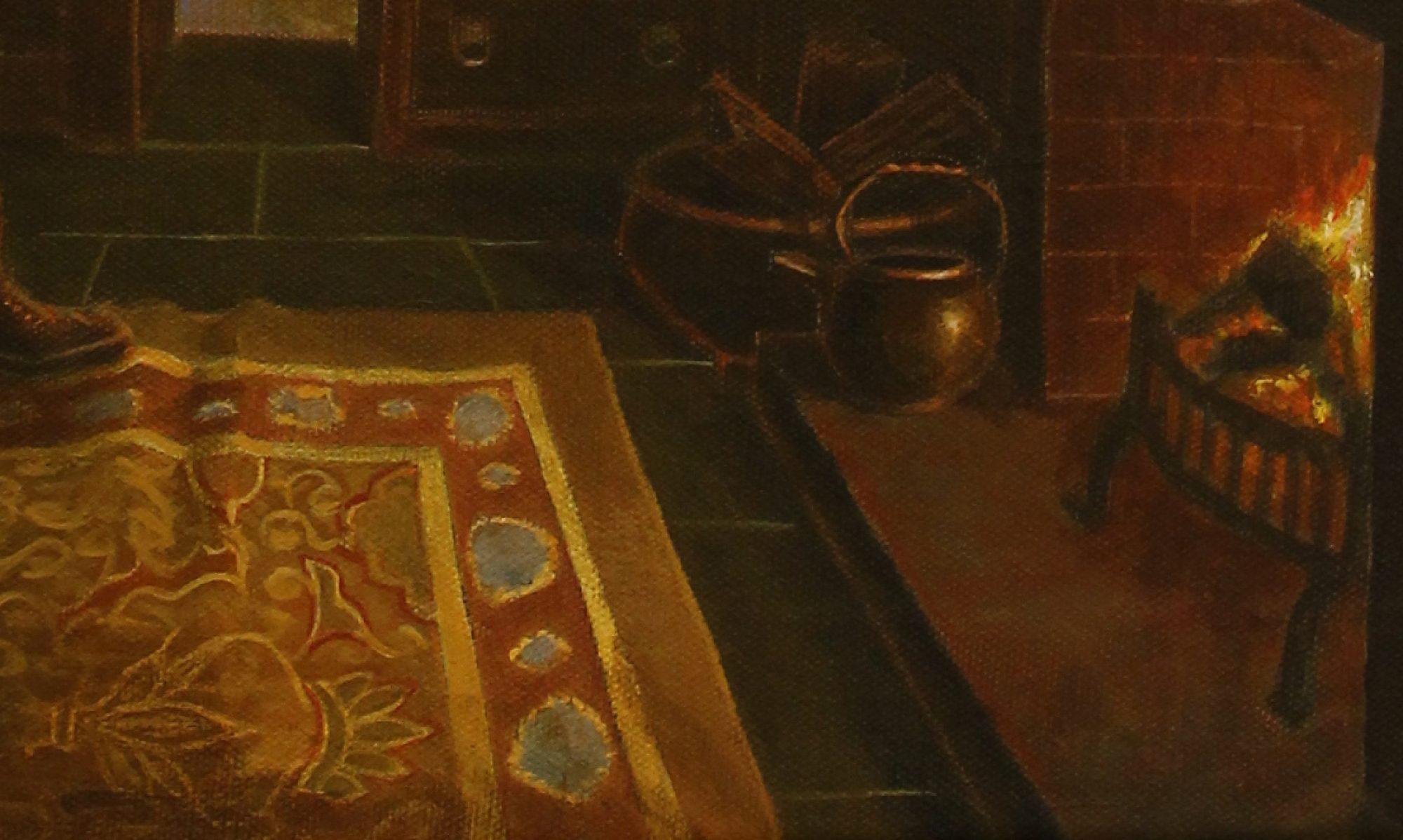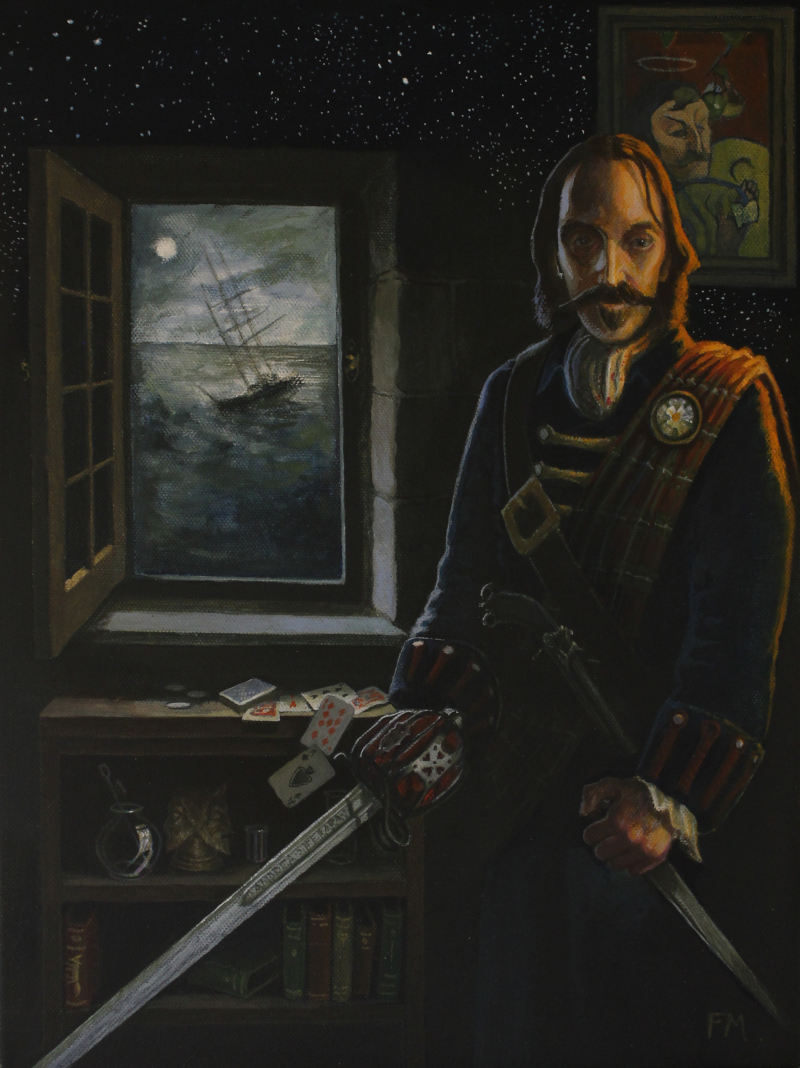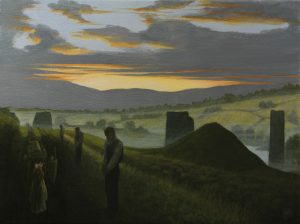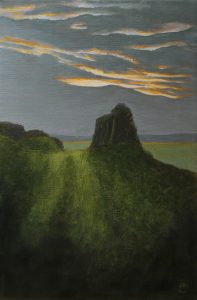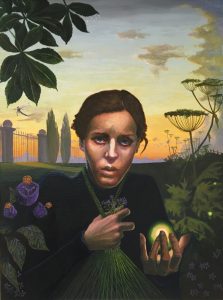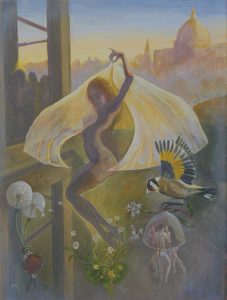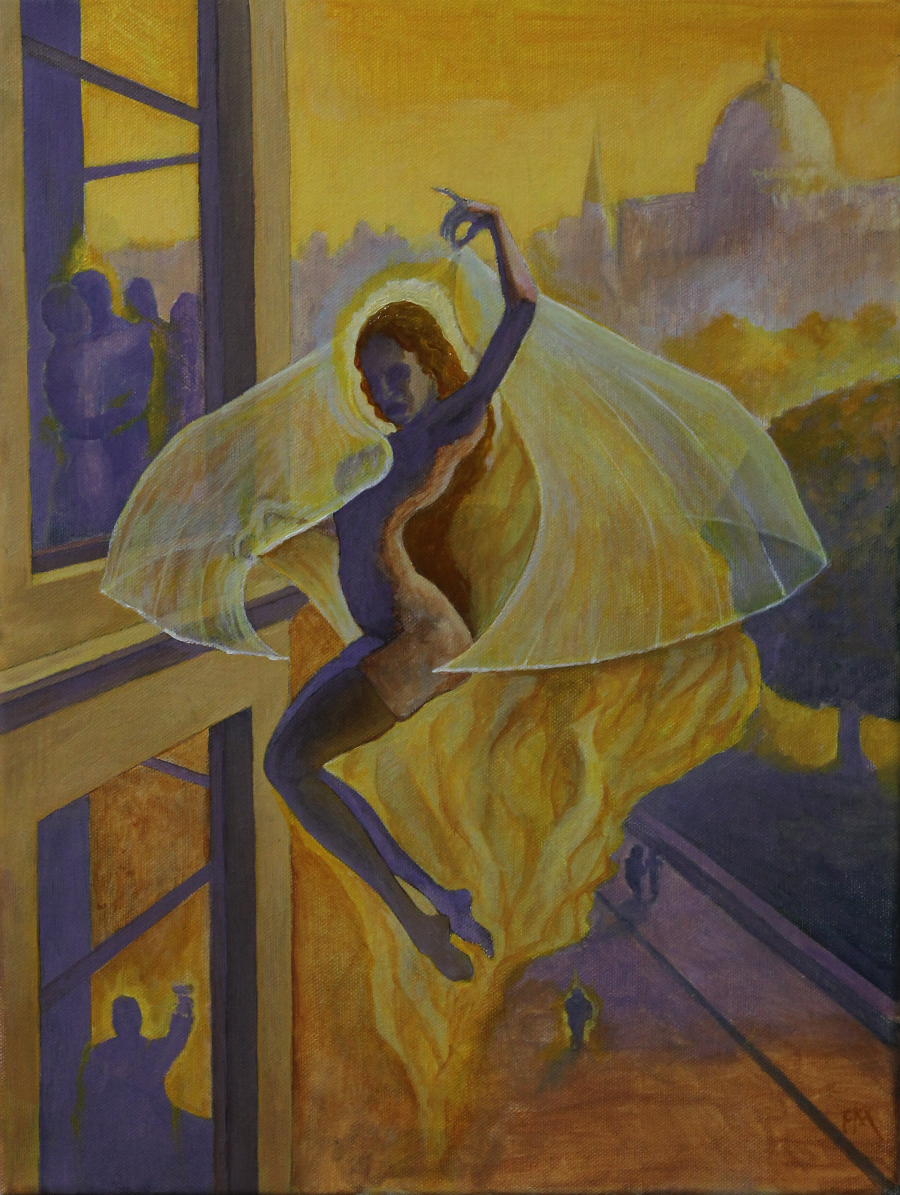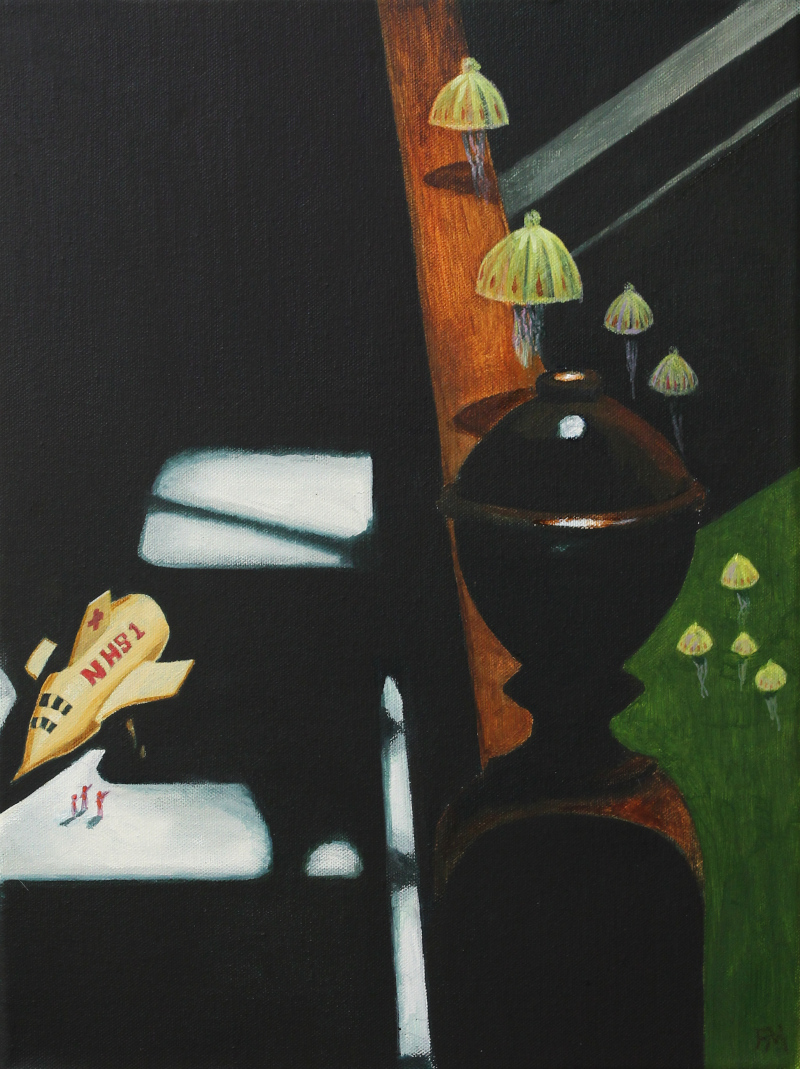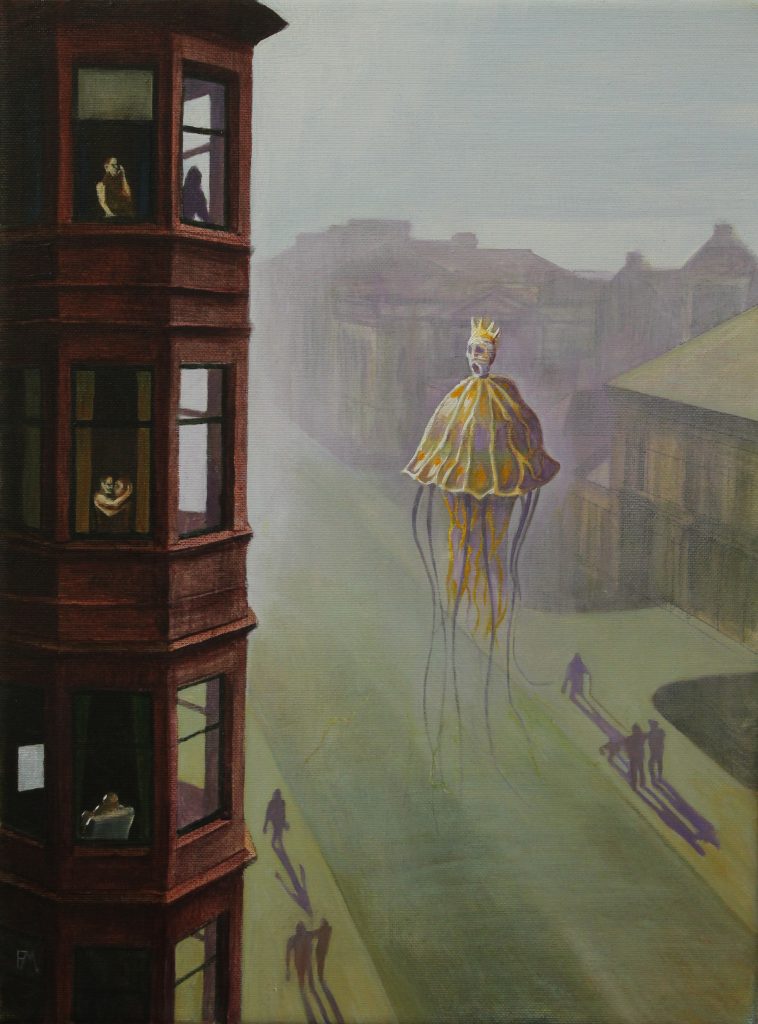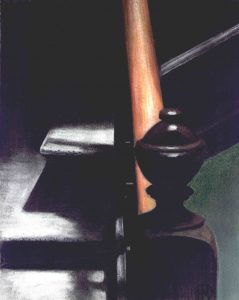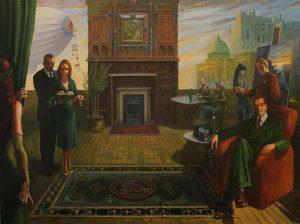30 x 40cm, oil on canvas.
Available.
A portrait of Robert Louis Stevenson, this shows the author imagining himself as the character Alan Breck Stewart from his novel “Kidnapped”.
Stevenson was plagued by illness most of his adult life, but, despite this, he was widely travelled. He eventually moved to Samoa, in the South Pacific, for his health and died there in 1894.
His writings include “Treasure Island”, “The Strange Case of Dr Jeckyll and Mr Hyde”, and “Kidnapped”. These are all well-known wonderful stories of adventure still beloved by readers today.
In this picture I have tried to depict the author living through his work and displaying the determination needed to produce the work he is famous for. There are many references to his stories in the painting, and also to his travels. (Gaugin was another famous cultural figure who travelled to the South Seas when Stevenson was there, although there is debate as to whether the two met).
“Under the wide and starry sky,
Dig the grave and let me lie.
Glad did I live and gladly die,
And I laid me down with a will.
This be the verse you grave for me:
Here he lies where he longed to be;
Home is the sailor, home from sea,
And the hunter home from the hill.”
(Requiem by Robert Louis Stevenson 1850 – 1894)
